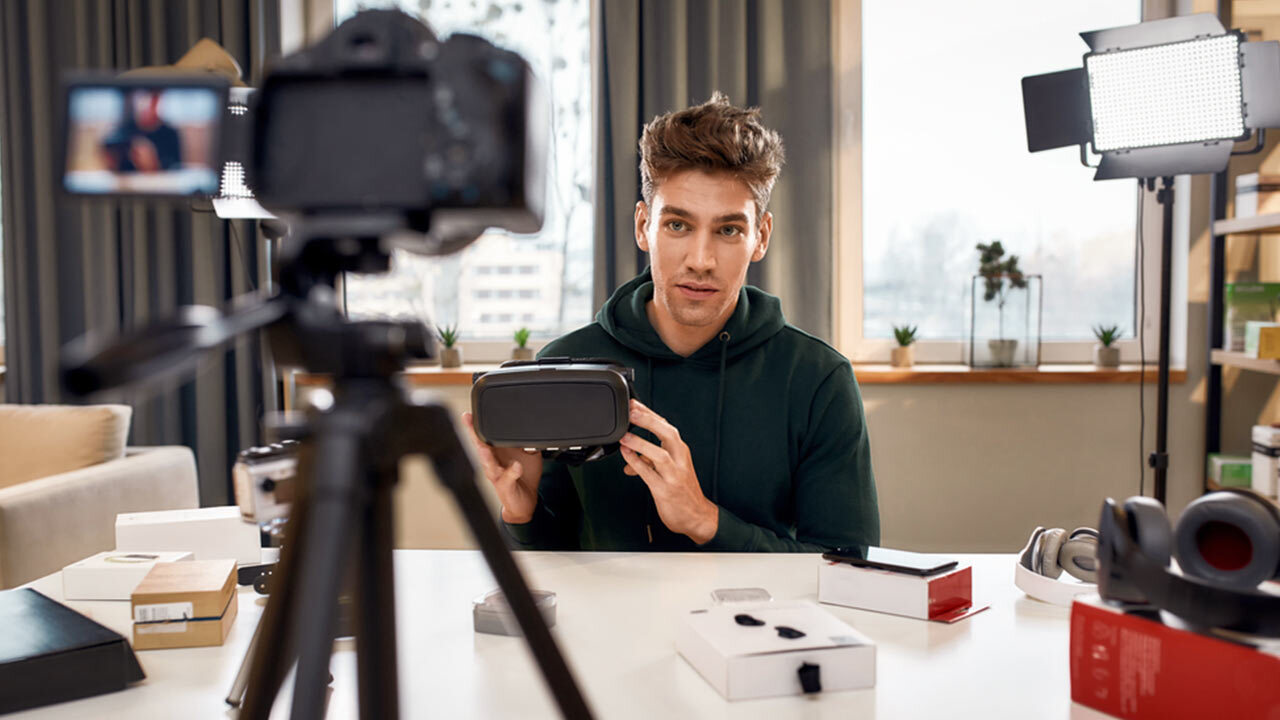Imagine a world where influencers are more than simply celebrities who promote products in glossy ads and orchestrated promotions. Building a truly authentic influencer marketing plan has emerged as the pinnacle of successful brands in this era of informed consumers. The days of generic sponsorships are long gone; today, it’s all about relating to real individuals, building sincere relationships, and striking a deeper chord with your target audience.
The foundation of a successful influencer marketing approach is authenticity. Consumers have honed a keen eye for spotting false endorsements in a world overrun with sponsored material. They seek recommendations from individuals they trust rather than conventional marketing because they yearn for real connections and experiences.
Influencers’ material that reflects their authentic ideas and experiences resonates more deeply with their audience when they sincerely believe in the brand they’re endorsing. Authenticity improves the reputation of the brand and encourages loyalty and trust. Increased engagement and conversions result from it since it creates a sincere bond between the influencer, the brand, and the audience. In this article, we are going to reflect on how to build an authentic influencer marketing strategy.
Setting a Campaign Goal
Every strategy begins by setting the right goals, commonly known as objectives and key results (OKRs), which many marketers utilize to measure success. The specific campaign goals you prioritize will depend on your broader business goals:
- Are you aiming to drive sales and conversions for specific product segments?
- Or is your focus on goals like attaining a certain percentage of engagement or reach?
It’s crucial to determine your desired outcomes from the start, as this will help maintain your focus throughout the process and facilitate result measurement later on. Potential campaign goals include:
- Enhancing brand awareness
- Improving sales performance
- Increasing engagement
- Expanding reach
A clear campaign goal is a prerequisite for developing an authentic influencer marketing approach. It gives direction, allows for success evaluation, and guarantees that your efforts are aligned with your larger marketing objectives. You can create a powerful and influential influencer campaign by establishing a goal that respects authenticity and resonates with your target audience.
Campaign Setup
Before setting a campaign setup, ask these W questions:
- Who are you trying to reach?
- When are you trying to reach them?
- What is the budget to reach them?
- Where is their demographic?
The answer to these questions will lead you to set up a successful campaign. On the other note, according to statistics, 83% of Instagram users think that Instagram Stories are the best format for influencer marketing. This information emphasizes how vital it is to choose the best platform and format in order to optimize the impact of your campaign. You can improve the efficacy of your influencer marketing strategy and obtain the results you want by these:
You don’t want to waste time and money attempting to engage a specific demographic just to discover that your product is better suited to a different group. You definitely don’t want to invest in your marketing. Understand the demographics, interests, and preferences of your target audience. This understanding can assist you in selecting influencers whose material connects with your target audience, ensuring authenticity and engagement.
Conduct extensive research to identify influencers that align with your business values and have a genuine following. Assess their legitimacy and fit for your campaign by looking at aspects such as their content quality, engagement rates, audience demographics, and previous collaborations.
Collaborate with influencers to create content that complements their aesthetic while efficiently promoting your company. Encourage influencers to share honest product or service evaluations, testimonials, or personal experiences. Better engagement and trust will result from authentic content that feels natural and relatable to the influencer’s audience.
Conducting Proper Research
Conducting proper research and discovering genuine influencers who add value to your company and brand is an important part of your influencer marketing plan. The process of identifying the correct influencers can make or break your campaign’s success. Influencers tend to build their audience over time and their audience trusts them. This trust gives them the opportunity to introduce your business to new potential clients. 33% of brands find it difficult to find their target audience so, discovering the right influencer for your marketing strategy should be rightly done.
There are various factors to consider while choosing influencers:
- Brand fit: Ensure that the influencer’s reputation and content are consistent with the image and values of your brand.
- Authenticity: The authenticity of the influencers you have chosen will bring credence to the message of your brand.
- Audience data: Examine the influencer’s demographics, engagement rates, and reach to see if their following is similar to your target market.

Many of the most well-known brands are using influencer marketing platforms to speed up the discovery process. These platforms include thorough tools and databases that aid in finding and researching influencers for prospective partnerships. Utilizing these platforms can help you partner with the most appropriate influencers for your company while also saving time and providing useful data.
Negotiation with Influencers
While influencer marketing can be thrilling and glamorous, it often involves some tedious but required paperwork. You must agree to and document the terms and conditions with any influencer with whom you collaborate.
Will the collaboration be compensated, and if so, how much? What do you want to gain in return? Is there anything else important to consider, such as exclusivity? All of this should be included in a formal contract and approved by your legal team or legal counsel.
What does an influencer cost?
According to a hypeauditor study, 70.7% of Micro-influencers (1K-10K) earn less than $100 each post on average, whereas 46.10% of Mega-influencers (Over 1M) earn up to $1,000 – $2,000 every post.
Discussing Collaboration Details
After identifying the influencers, channels, and campaign goals, your role as the brand is to brief the influencers on desired outcomes, brand values, and identity. It’s important to give them creative freedom as they understand their audience best. Micro-managing the process can result in bland and inauthentic content. Once briefed, the influencers will present creative concepts for approval. Once finalized and approved, the campaign can go live. Maintaining communication with influencers throughout the process is essential for effective management and achieving the best results.
Tracking Output
Tracking the results of an authentic influencer marketing approach is critical for measuring campaign effectiveness and making data-driven decisions for future projects. When tracking the results, keep the following points in mind:

- Create a list of key performance indicators (KPIs). Set particular KPIs that are in line with your advertising goals. Reach, engagement, conversions, sales, brand sentiment, website traffic, and social media mentions are examples of such KPIs. Clear KPIs serve as a yardstick for measuring the performance of your approach.
- Make use of tracking tools and analytics. Use tracking tools and analytics services to track and measure the success of your influencer campaign. These tools, such as social media analytics, Google Analytics, and affiliate tracking software, can provide insights into metrics like as impressions, clicks, conversions, and audience demographics.
- Keep track of influencer-specific metrics, such as engagement rates, follower growth, and the impact of their material on your brand. This allows you to find top-performing influencers for future partnerships by evaluating the performance and efficacy of individual influencers.
- Implement unique tracking links or discount codes. Assign influencers distinct tracking links or discount codes to track conversions and attribute them to their personal efforts. You may then directly measure the impact of their promotions on sales or website traffic.
- Analyze the sentiment and feedback of your influencer campaign’s audience. Examine comments, direct messages, and social media conversations to learn how your target demographic is reacting to the campaign. A successful and authentic campaign is characterized by positive emotion, increased brand mentions, and audience engagement.
The Report, Analyze & Evaluate
Reporting, analyzing, and evaluating the outcome of an authentic influencer marketing strategy is essential. Collect relevant data and metrics, analyze performance, assess ROI and brand sentiment, consider influencer feedback, identify strengths and weaknesses, adjust future strategies, and prepare a comprehensive report. This process enables informed decision-making, optimization, and building stronger influencer relationships.
Wrapping Up
The key to unlocking the actual value of influencer collaborations is to develop an authentic influencer marketing plan. You may engage with your target audience on a deeper level by stressing authenticity, defining clear goals, carefully selecting influencers, and encouraging genuine relationships. Remember that success is built on trust, relevant content, and tracking results to continually tweak and enhance your strategy.




